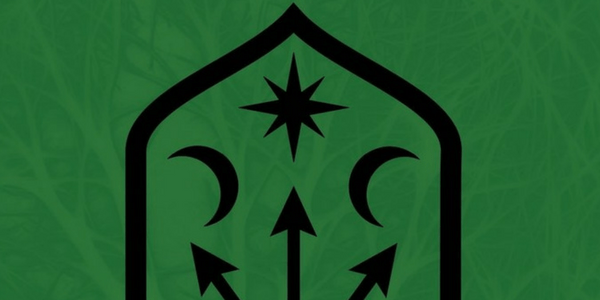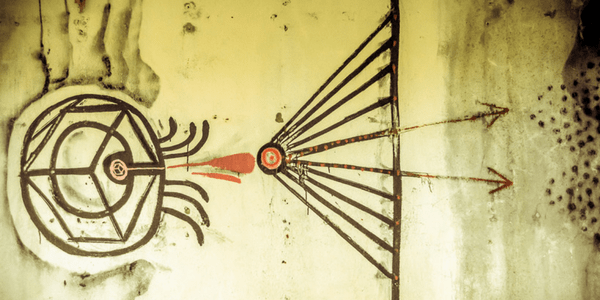 Who is this trickster archetype, the one who inspires such mixed feelings and brouhaha? Trickster has been with us from the beginning. Trickster will be there at the ending. (If there is an ending, Trickster will probably trigger it). Trickster is a creator, a transformer, a joker, a truth teller, a destroyer.
Who is this trickster archetype, the one who inspires such mixed feelings and brouhaha? Trickster has been with us from the beginning. Trickster will be there at the ending. (If there is an ending, Trickster will probably trigger it). Trickster is a creator, a transformer, a joker, a truth teller, a destroyer.
Whoever has created a dance, a song, written a ritual, tailor-made a job, birthed a child or invented a game has partaken of a controlled Trickster energy. After all, in Northwest Native and Inuit tradition, Raven created the world; Loki is known to the Norse as a co creator (and the bringer of Ragnarok); Anansi the spider-trickster among the Ashanti of Ghana and Nareau the spider in Micronesia; Coyote among the Southwest Natives — these are the creator aspects of this wild and uncontrolled energy. Trickster often begins in the void, desiring to bring Order out of Chaos; once Order is imposed, however, Trickster represents the breaking free of negative power from the Universal Order of things.
As a shape-shifter, Trickster is all things to all people, at one time or another, and often simultaneously. Of course Trickster is a creator and a destroyer. Sure he’s a family man and a vagabond. Naturally he gives fire to humans and then steals their food before they can cook it. This is his style; when he acts out of selfishness, everyone benefits — Maui of the Thousand Tricks might snare the Sun to slow it down, making life easier for humans, but he did it so his mother would have more time to cook for him. When he acts out of altruism, there’s most always a negative effect –Marawa, a Lou Costello prototype from Banks Island carved human figures from wood and put them in the ground so they would grow and be strong; however, they merely rotted and death came into the world of humans. This shape- shifter not only moves from shape to shape, but from world to world. Number Eleven suffered at the hands of death to free his brothers; his brothers then took his lifeless body away and revived him. In the Winnebago cycle, Trickster dies three times and returns to life three times. In just one collection of Coyote stories, Giving Birth to Thunder, Sleeping With His Daughter, Coyote dies of a snake bite, a gunshot, an arrow wound, a broken heart, a rock-fall and a drowning; this resembles nothing so much as a Roadrunner cartoon.
Trickster fuzzes the lines between male and female, between cunning and stupidity (in one story Coyote steals a horse, in another he almost drowns trying to eat some berries reflected in a stream), between wisdom and stupidity. Trickster tells us the truth about our selves, showing us with truth and wit the sides of our nature that we may be more comfortable not acknowledging; he’s the one who points at the Emperor’s nakedness, he’s Lenny Bruce and Ashleigh Brilliant, Ken Kesey and Uncle Remus, Opus, Geech, Tom Robbins, Abbie Hoffman, Don Becker, Weird Al Yankovich and David Letterman, holding up a skewed mirror of reality for us to look into. Among the Aztecs, as serious a culture as this continent has ever seen, Ueuecoyotl, a funny and outrageously unacceptable clown figure; in the Southwest, at serious rituals, he’s the Koshare speeding around the circle with tickling feathers and rattle, being ignored completely by the priest.
Trickster shines on as a culture bringer: Prometheus steals fire for his poor stunted creations, and pays a terrible and eternal price for his philanthropy. Loki also steals fire for humans, as do Anansi, Raven, Coyote, Maui; so far I have found no less than seventeen stories from different cultures on this theme. Anansi tricked Nyankopon the Sky-God out of his stories and gave them to the humans. Clat, from Banks Island, taught humans how to sleep.
In the stories of the Ashanti, Anansi invented the tar-baby as a ruse to trap an elemental spirit, but in the Native American stories, Coyote is trapped by a tar-baby set up by a farmer. Actually the farmer had caught a rabbit with his tar-baby, but Coyote happened along and asked Rabbit what he was doing there. “The farmer who owns this field got mad at me because I wouldn’t eat his melons, so he stuck me here and said he’d come back and make me eat chicken.” Rabbit replies, “But I told him I wouldn’t do it.” Of course, greedy Coyote extricates Rabbit and wraps himself around the tar-baby where he still his when the farmer comes out and shoots him.
So this is the Trickster, the energy that allows us to break out of our stereotypes, whether they’ve been imposed by ourselves, our families, our culture. This is the energy that opens the world of limitless possibilities and it behoves us all to work with it before it destroys us, to touch the Trickster as he touches us.
…………from RMPJ, Oct.’86
This article is excerpted from the Rocky Mountain Pagan Journal. Each issue of the Rocky Mountain Pagan Journal is published by High Plains Arts and Sciences; P.O. Box 620604, Littleton Co., 80123, a Colorado Non-Profit Corporation, under a Public Domain Copyright, which entitles any person or group of persons to reproduce, in any form whatsoever, any material contained therein without restriction, so long as articles are not condensed or abbreviated in any fashion, and credit is given the original author!








